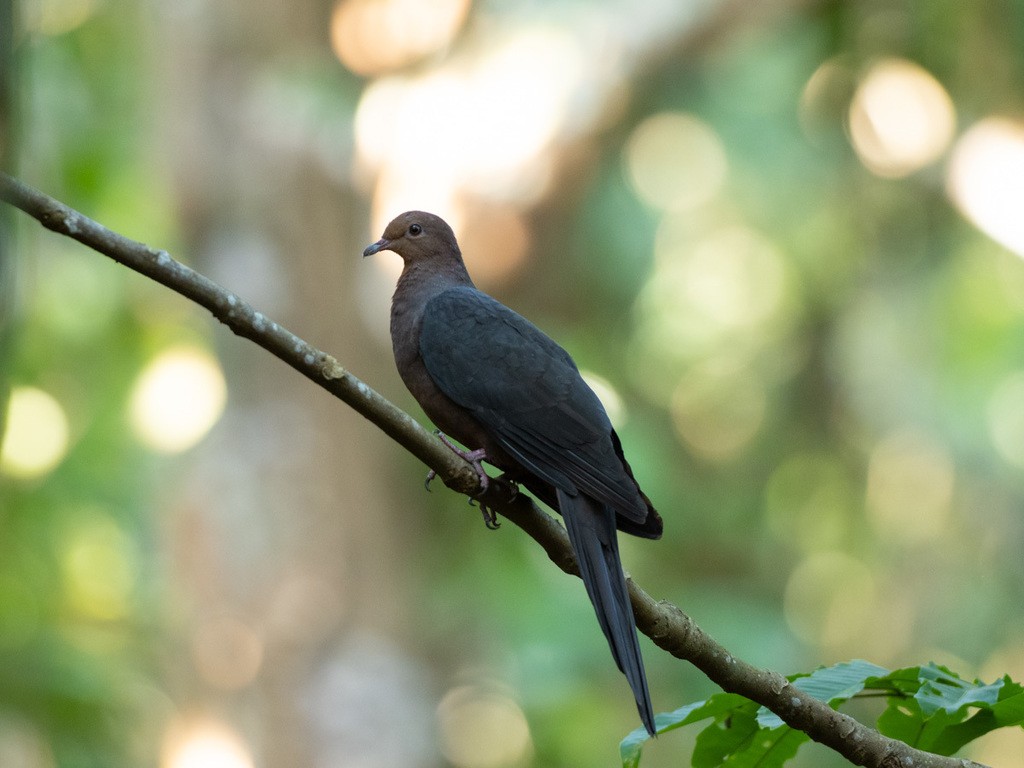Philippine Cuckoo-dove
A species of Macropygia cuckoo-doves Scientific name : Macropygia tenuirostris Genus : Macropygia cuckoo-doves
Philippine Cuckoo-dove, A species of Macropygia cuckoo-doves
Botanical name: Macropygia tenuirostris
Genus: Macropygia cuckoo-doves
Content
Description General Info
 Photo By bentsai , used under CC-BY-NC-4.0 /Cropped and compressed from original
Photo By bentsai , used under CC-BY-NC-4.0 /Cropped and compressed from original Description
The Philippine cuckoo-dove is a large cuckoo-dove that measures 38.5 centimetres (15.2 in) in length, and weighs 157 to 191 g (5.5 to 6.7 oz). The head is cinnamon reddish brown in colour, and the uppermantle has an amethyst shine with small brown freckles. The hindneck has an amethyst shine too. The adult has an orange-reddish brown forehead, with a chestnut coloured crown and nape that have pinkish tinge. The irides are red, and the beak is brown. The ear coverts and neck-sides are also orange-reddish brown. The hindneck and breast-sides are shiny pinkish purple, and have black spots. The breast is lightly tinged with lilac. The outer tail coverts are dark reddish brown, with black subterminal bands. The feet are bright red in colour. The adult female has warm buff hindneck which is spotted and barred with black. The mantle and the wing coverts are more reddish brown at peripheries. The juvenile resembles the female in appearance, but is more barred. 
Size
38 cm
Nest Placement
Tree
Feeding Habits
Philippine Cuckoo-dove frequents fruiting trees, especially Ficus, in various environments from new clearings to primary forests. Typically found alone or in small groups, philippine Cuckoo-dove forages for fruits, displaying flexible feeding behaviors aligned with the availability of food sources.
Habitat
The habitat of philippine Cuckoo-dove typically comprises dense forest areas, including secondary growth and forest clearings. These birds are generally found in regions characterized by heavy woodland and ravine environments. They show a preference for areas where the natural vegetation provides ample cover and feeding opportunities on the ground, frequently occurring either solitarily or in pairs. Philippine Cuckoo-dove's habitat choice reflects an avoidance of cultivated land, suggesting a reliance on more undisturbed natural forest conditions.
Dite type
Frugivorous
General Info
Feeding Habits
Bird food type

Fruit
Species Status
Since 1998, the Philippine cuckoo-dove has been rated as a species of least concern on the IUCN Red List of Endangered Species. This is because it has a large range—more than 20,000 km (7,700 mi)—and because it has a stable population trend. Also, although its population numbers have not been determined, they are thought to be above 10,000, which is above the criterion to warrant a vulnerable rating. It is reportedly a widespread species. It is thought to have no major threats. 
Scientific Classification
Phylum
Chordates Class
Birds Order
Pigeons and doves Family
Dove Genus
Macropygia cuckoo-doves Species
Philippine Cuckoo-dove